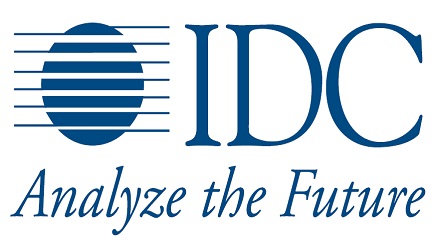E-Business
50% Govt Agencies to Depend on 3rd Platform Technologies by 2020- IDC

By 2020, more than 50% of government agencies with direct citizen engagement missions will direct at least 25% of their programmatic budget to 3rd Platform technologies and IoT, according to IDC Government Insights.
To achieve the intended benefits of the citizen experience, innovation will not only come in the form of new digital channels but also as a more comprehensive approach to redefining the citizen experience.
IDC Government Insights has developed the IDC MaturityScape on citizen experience (IDC #GITS04X) to help senior digital government leaders create a road map to better align the organization’s mission, operating model, and tools with the emerging needs of a consistent omni-channel citizen experience.
The study identifies five maturity stages for citizen experience based on a set of specific vision, people, process, and technology dimensions and outcomes.
Governments around the world are under increasing pressure to improve end-to-end citizen experience, optimize resource allocation, and re-imagine the way their employees, partners, and suppliers contribute to service delivery.
3rd Platform technologies such as cloud, mobile, social, and Big Data offer unparalleled opportunities to deliver new business capabilities along with the accelerated innovation in areas such as robotics, natural interfaces, cognitive systems, and the Internet of Things (IoT).
The challenge for government organizations is to orchestrate such technologies (with employee training) and process changes to optimize the composite outcomes of these and other uncontrollable external factors that result in the citizen experience.
The citizen experience IDC MaturityScape provides actionable guidance to senior IT decision and mission stakeholders who are tasked with ensuring that their organizations are effectively embracing citizen experience.
The study identifies five maturity stages for citizen experience based on a set of specific vision, people, process, and technology dimensions and outcomes:
Ad hoc: At this level, government agencies are managing citizen requests that flow in through multiple, independent channels within the established programmatic, organizational, and technology constraints.
The limited sharing of information about citizen requests within and across programs is due to organizational history, legislative constraints, and siloed technology implementations. There are no communications with (or training for) government employees regarding the principles of providing a good citizen experience.
Opportunistic: At this level, government agencies begin to employ business process automation (BPA) systems and customer relationship management (CRM) systems that have been tuned to the specific needs and requirements of government to offer better integration of services for citizens and the limited sharing of information across systems and programs.
There is a minimum level of communication with government employees and isolated training about the principles of citizen experience.
Repeatable: At this level, government efforts shift from being programmatic to citizen-centric. To accomplish this, it requires deeper and broader implementation of BPA, CRM, and other systems that results in digitized workflows across traditional engagement channels and back-end systems.
This opens up opportunities at the front end for citizens to complete some of their requests within a fully automated process. There is clearer communication and training about citizen experience.
Managed: At this level, government organizations are able to employ advanced digital, web 2.0, and social technologies to extend citizen engagement and citizen self-service beyond traditional engagement channels.
But it also requires a deeper integration of data and processes and sharing of best practices within and across programs to provide an integrated cross-functional experience.
There is a government executive ownership of the citizen experience and a formal process for training on citizen experience.
Government agencies may also implement a citizen satisfaction survey process to gather feedback which is then used to improve the process.
Optimized: At this level, qualified data about citizens and preferences is used and integrated within and across channels, allowing government programs to offer a consistent and contextual experience for the citizen across channels that also integrate with private sector programs.
Citizen experience is a key component of the government program, and government employees are trained about and employ citizen experience principles.
“Government executives who want to drive citizen value should invest in 3rd Platform technologies and address the organizational change issues that will be encountered, including updating the programmatic mission, shifting and optimizing workflows, and managing legislative expectations,” said Massimiliano Claps and Alan Webber, research directors, IDC Government Insights.
IDC MaturityScapes are used by IT executives and their enterprise partners to have a structured way to identify their current level of maturity, and the gap between where they are and where they want to be to maintain competitive balance or achieve industry superiority.
Using IDC MaturityScapes is a way to reduce the friction of change, to make more precise investments, and to identify the details of governance, process, technology, organization, and other factors that can derail the best-laid technology initiative.
IDC Government Insights assists government policy, program, and IT leaders, as well as the suppliers that serve them, in making more effective technology decisions by providing accurate, timely, and insightful fact-based research and consulting services.
E-Business
NIMC Says NIN Services Back Online

National Identity Management Commission (NIMC) has announced the restoration of its National Identification Number (NIN) verification services nationwide.

This, according to the commission, follows the completion of a system maintenance exercise.
In a statement issued on Friday, the NIMC confirmed that all previously disrupted services have resumed.
“NIMC wishes to inform the general public that the recent technical maintenance has been completed and all services have been restored,” the statement read.
The NIMC urged Nigerians seeking to enroll for NIN to visit the its official website to locate the nearest enrollment centers.
The agency also encouraged individuals to make use of its self-service portal for tasks such as data modification, including name changes.
To further ease the verification process, the Commission recommended downloading the NIMC NameAuth app (oath.app) from the Google Play Store or Apple App Store for quick and secure NIN authentication.
NIMC expressed appreciation for the public’s patience during the service disruption, which had impacted banks, telecom providers, and government agencies that rely on NIN verification for their operations.
E-Business
Report Reveals African Organizations Dangerously Overestimating Cyber defences

Many businesses are overestimating their defence against cyber attacks, which creates a significant human risk blind spot. A new KnowBe4 report exposes a worrying disconnect between what leaders think about their cyber security readiness and what employees experience.

According to the KnowBe4 Africa Human Risk Management Report 2025, based on insights from cyber security decision-makers across 30 African countries, despite high awareness, a critical gap exists in turning that awareness into actual readiness and resilient behaviour.
Key findings from the KnowBe4 Africa Human Risk Management Report 2025:
Confidence vs awareness: While cyber security awareness is high, leaders express uncertainty about their workforce’s ability to act on that awareness. Many feel employees may overestimate their capabilities in recognising, reporting and mitigating threats.
The need for adaptive and personalised security awareness training: Many companies fail to personalise security awareness training to specific roles or risk exposures.
Widespread BYOD usage: A large percentage of employees (between 41% and 80%) use their personal devices for work.
AI policy development is lagging: Many companies (46%) are still in the process of developing policies for using AI tools in the workplace.
Regional variation: Southern Africa trains more, East Africa governs AI better and West/Central Africa sees the most human-related security incidents.
This gap is significant because Africa has become an attractive target to cyber criminals, especially those that launch AI-powered attacks. A LexisNexis Risk Solutions study found 60% of South African organisations have seen an increase in AI-facilitated financial crime – above the 56% global average.
Kehinde Popoola, regional manager and key representative for West and East Africa at Rubrik, said digital transformation is gaining momentum in Africa and companies are more exposed to cyber risk. The Rubrik executive adds that amid an increase in threats, it is crucial that organisations adopt an assumed breach mindset.
The KnowBe4 research shows that cyber security preparedness and the actual structures required to support secure behaviour seem misaligned.
The report highlights that just 10% of cyber security leaders are fully confident that staff would report a phishing attack or other cyber threat, despite rating employee security awareness of cyber threats at four out of five or higher.
There is also a significant perception gap between decision-makers and general employees in Africa regarding security awareness training, with 68% of leaders believing that training is tailored to roles, compared to only a third of employees feeling adequately trained.
KnowBe4 asserts that many organisations only conduct annual or biannual training that is too generic to effectively change behaviour, contributing to uncertainty about its effectiveness.
According to another report, the KnowBe4 African Cybersecurity and Awareness Report 2025, which focuses on end-user based responses, only 43% of African respondents felt confident in their ability to recognise a cyber threat, and just one in three believed their security awareness training was adequately tailored to their role. This comparison suggests the development of a dangerous perception gap in many organisations.
“There’s a disconnect here – between what leaders think is happening and what employees are actually experiencing,” says Anna Collard, SVP content strategy and evangelist at KnowBe4 Africa. “The data shows that without procedural and cultural follow-through, awareness simply doesn’t translate into readiness.”
“The continent’s cyber security posture may be more confident than it is truly resilient,” Collard adds.
E-Business
Domain of Deception as Attackers Deploy Spyware Under Guise of Legal Threats

Kaspersky has detected a rapidly escalating malicious campaign that has targeted over 1,100 corporate users since June 2025. The attackers pose as a legal firm and in their emails threaten recipients with lawsuits over alleged domain name patent violations, aiming to deploy malware.

Victims who opened and launched the attached files – that mimicked legal documents – had a Trojan installed on their devices, and the attackers could spy on the content of their screens. Organisations across healthcare, finance, and education sectors have been targeted.
The campaign began with 95 emails on June 11 and has since continued to escalate. Apart from claiming that the recipient’s domain name violates patented combinations of a major brand and threatening litigation, in the email the fake legal bureau also expresses the patent holders’ interest in acquiring the domain and offers getting acquainted with the details of the alleged violations by opening the attached archive with “documents”.
It is worth noting that the attackers, likely to avoid detection, attach an archive that is not password protected, and inside it includes another archive that is password protected and a file containing the password along with it.
After the user entered the archive password and clicked on the alleged legal document inside, a Trojan was installed on the device. The user saw a message displayed that read, “This document cannot be opened on this device. Try opening it on another windows device,” and simultaneously the Tor Browser was covertly downloaded and installed in the background.
Through it, the malware regularly sent snapshots of the user’s screen to the attackers over the Tor network. The malware also autostarts whenever the computer is restarted.
“This campaign is a sophisticated blend of psychological manipulation and technical deception, leveraging fear of legal action to coerce businesses into executing harmful files hidden in attached archives. Its rapid growth since June 11 underscores the urgency for organisations to bolster defenses.
Victims face the risk of losing their private data. Robust email security, employee training, and swift incident reporting are essential to counter this evolving threat,” comments Anna Lazaricheva, spam analyst at Kaspersky.

 Telecom2 days ago
Telecom2 days agoMTN Nigeria Debuts Game-Changing CPaaS Platform at NextNow Forum

 News2 days ago
News2 days agoAMCON Confirms ₦100Bn Sale of Ibadan DisCo Amid Legal Disputes

 E-Financial2 days ago
E-Financial2 days agoNAICOM Issues New Licenses to SanlamAllianz Life, General Insurance

 E-Business2 days ago
E-Business2 days agoDomain of Deception as Attackers Deploy Spyware Under Guise of Legal Threats

 E-Financial2 days ago
E-Financial2 days agoGTCO to Become First Nigerian Bank to List on London Stock Exchange

 E-Financial1 day ago
E-Financial1 day agoCourt Affirms NIBSS Authority to Manage BVN

 News2 days ago
News2 days agoDBI, Miva Open University Partner to Advance Digital Innovation, Education

 Broadcasting2 days ago
Broadcasting2 days agoIFC, AfDB Collaborate with EbonyLife Media to Explore Supporting the African Film Industry to Drive Job Creation















